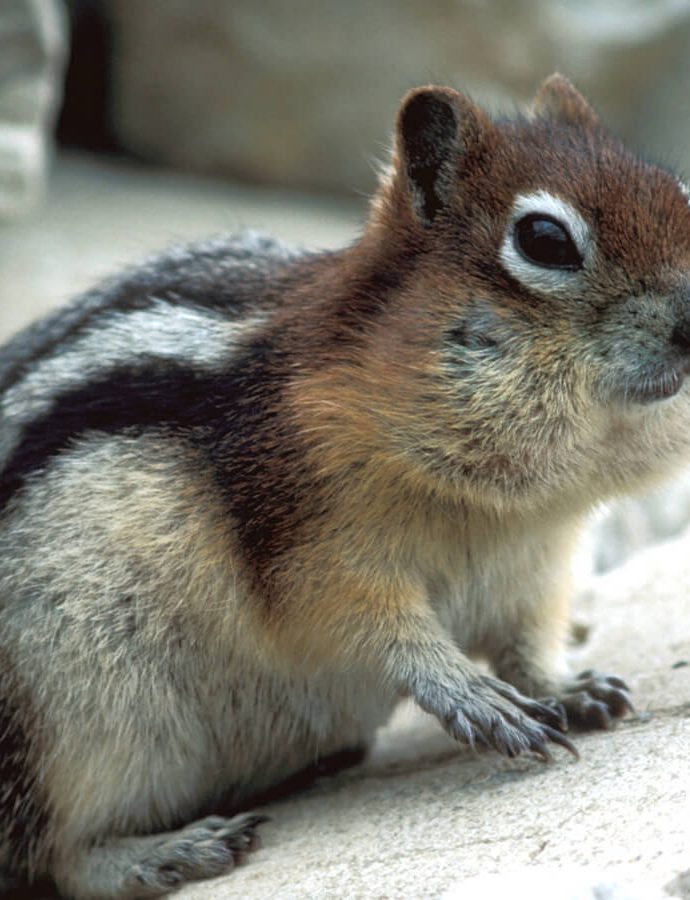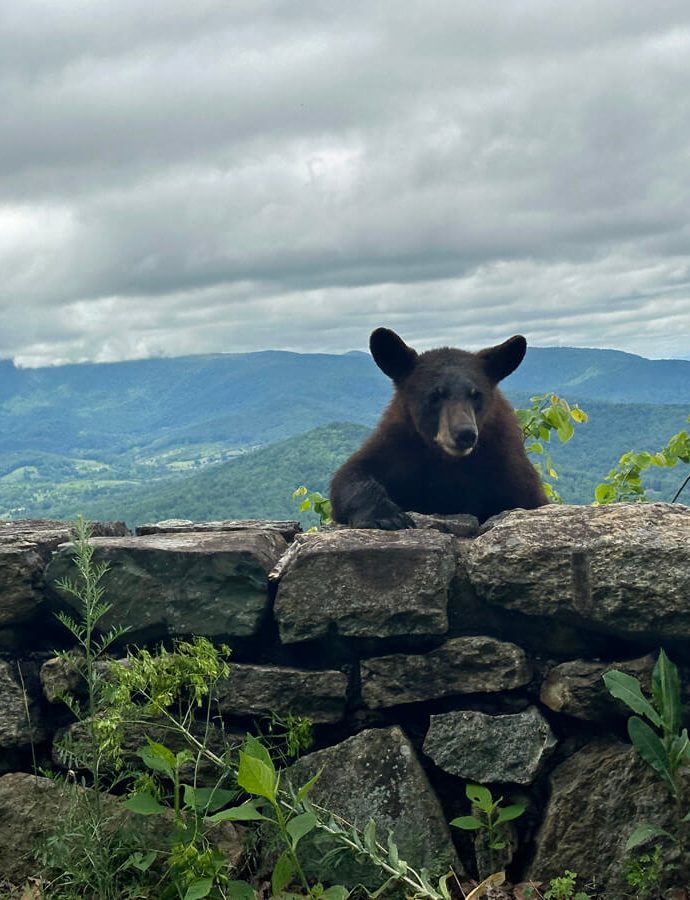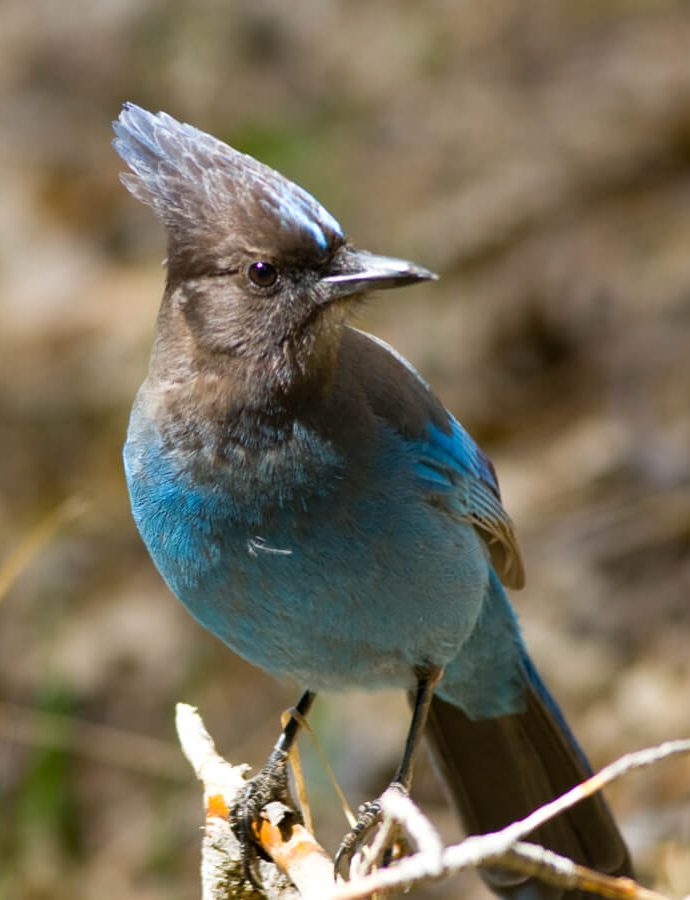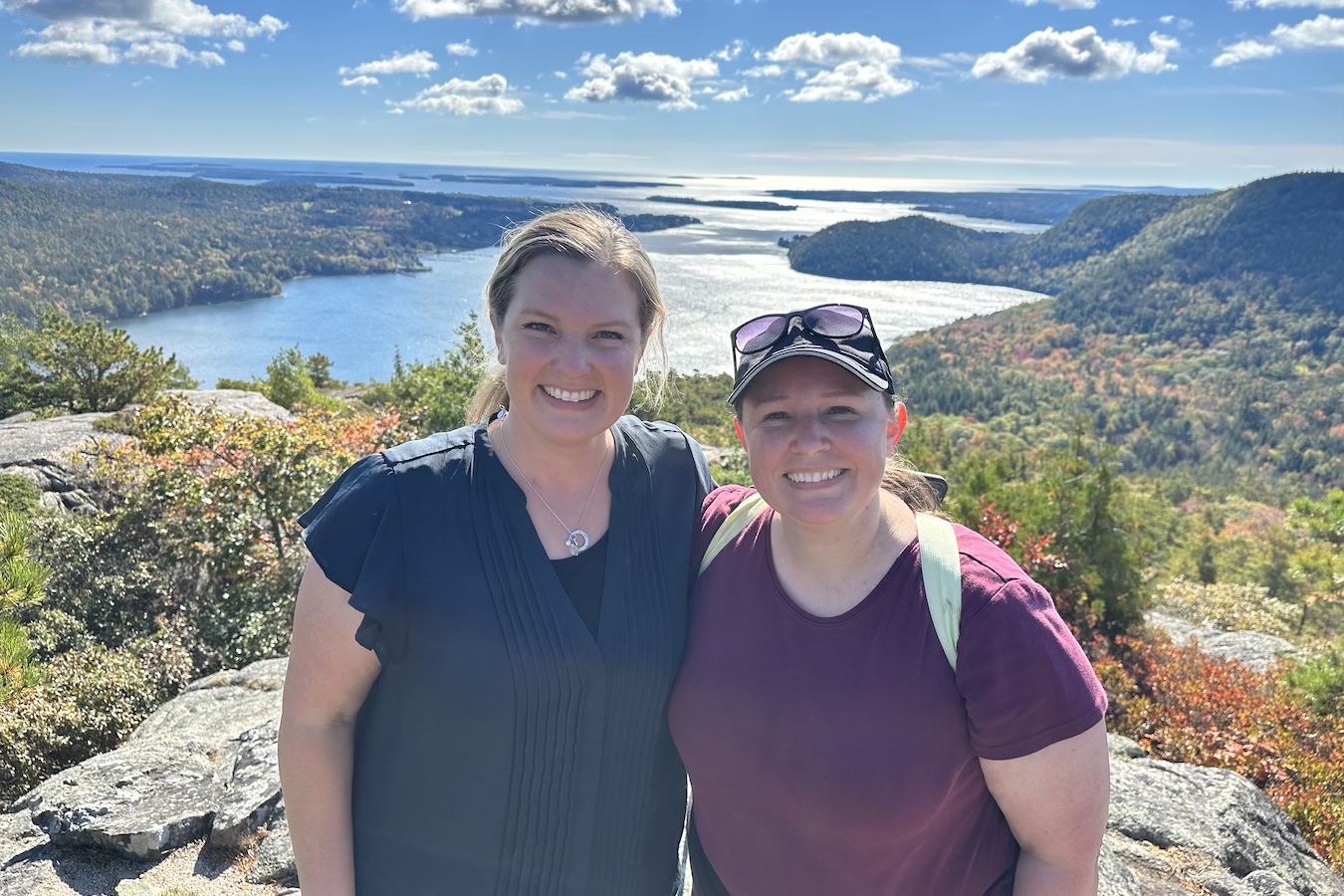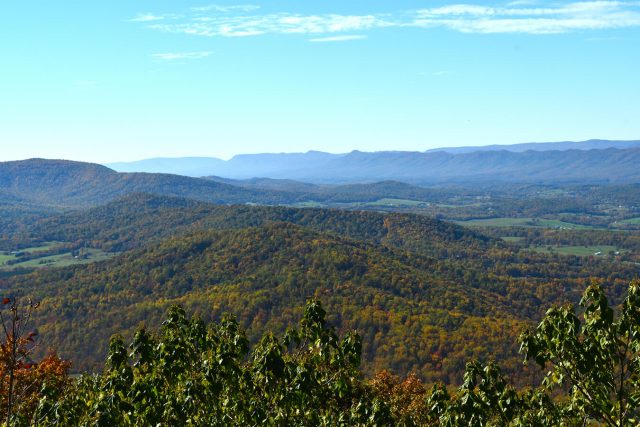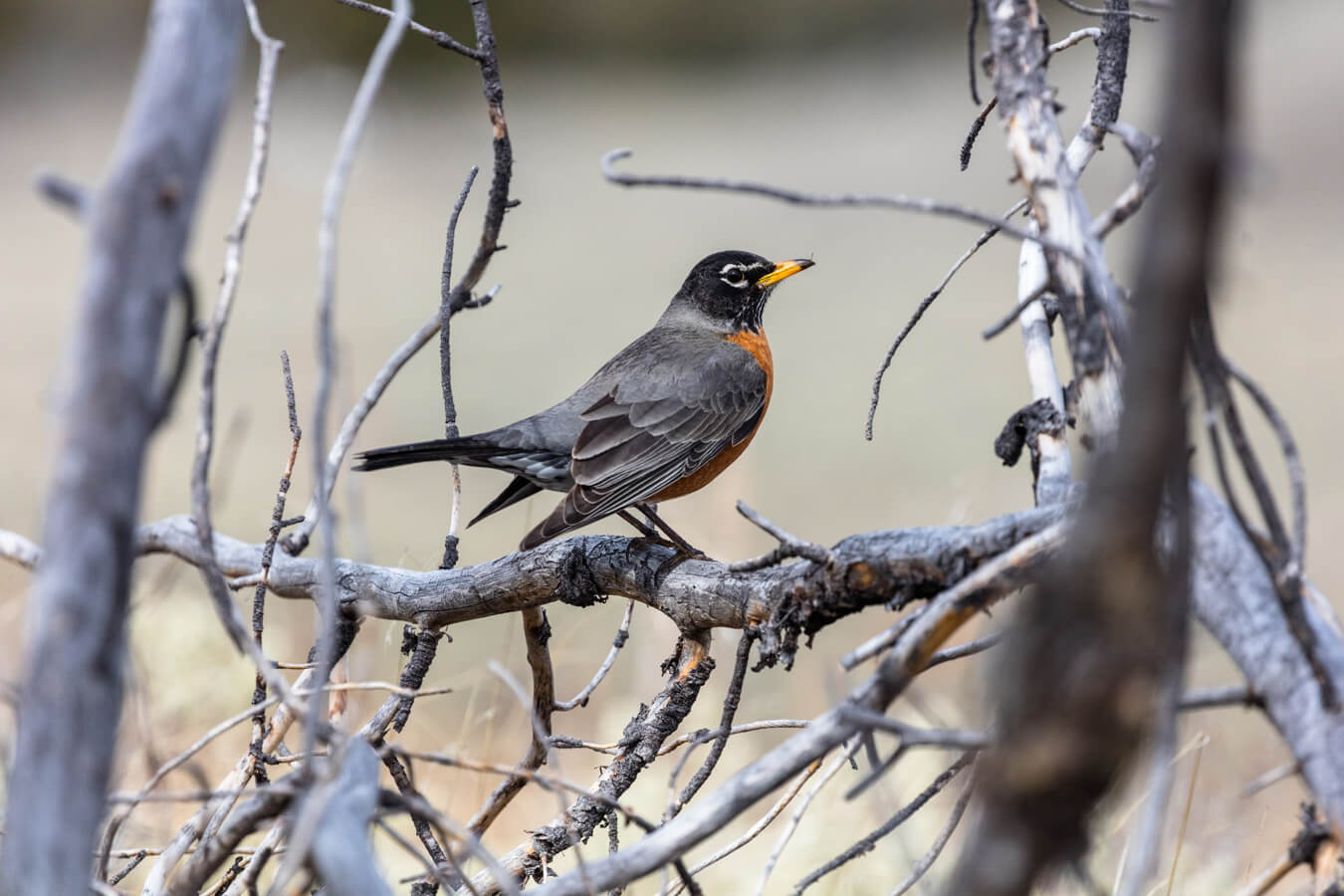
The American Robin (Turdus migratorius) is one of North America’s most familiar and beloved songbirds. Known for its vibrant “red” breast, cheerful song, and ubiquitous presence, the American Robin is often seen as a harbinger of spring. This migratory bird is named after the European Robin because of its reddish-orange breast. Due to their abundance and beauty, American Robins are rewarding subjects for amateur and professional photographers alike. Did you know the American Robin can be found in all 49 continental Unites States (and 58 of the National Parks) with varying degrees of abundance?
Learning about animals, like the American Robin, can significantly enhance wildlife photography skills by providing crucial insights into animal behavior, habitat and physical attributes. Understanding an animal’s habits can allow photographers to safely anticipate and capture unique and authentic moments. While knowledge of an animal’s habitat may help in selecting the best locations and times for shooting. Familiarity with physical attributes of specific species is also crucial in identifying and adding value and accuracy to the photographs.
If wildlife photography or simply wildlife viewing are of interest to you, then you’ve come to the right place! Together let’s learn more about what makes the American Robin so special.
Physical Characteristics
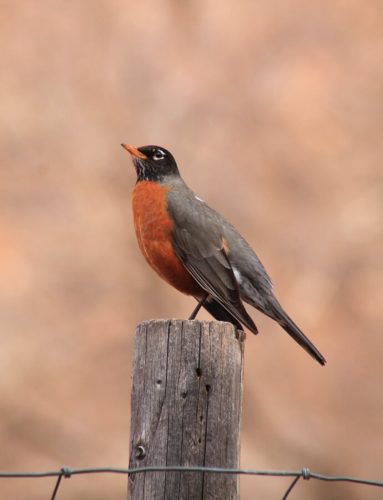
The American Robin is a medium-sized songbird, measuring about 10 inches in length with a wingspan of 12 to 16 inches. It has a distinctive appearance with its bright orange to reddish-brown breast, grayish-brown back, and a white throat streaked with black. The lower belly and under-tail coverts are white. The head is black in males and gray in females, with both sexes displaying a yellow bill and a white eye ring.
Males are generally brighter in color, with more vivid reddish-orange coloring on the breast and darker grays and blacks on the head and back. Females are slightly duller and paler, with less intense coloring compared to males. The bills of American Robins are slender and yellow, sometimes with a slight dark tip. It is well-suited for catching insects and picking fruits.
Juvenile robins have a speckled breast and are less brightly colored than adults. The vibrant reddish-orange breast of the robin is one of its most striking features, making it easily recognizable to birdwatchers and casual observers alike.
Habitat and Distribution
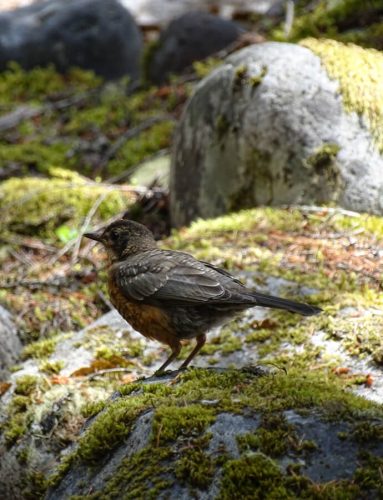
American Robins are highly adaptable birds found throughout North America, from Alaska and Canada to Mexico. They inhabit a wide range of environments, including forests, woodlands, gardens, parks, and urban areas. Their ability to thrive in diverse habitats has contributed to their widespread distribution. During the breeding season, which occurs from April to July, robins prefer areas with abundant trees and shrubs for nesting.
Robins are commonly found in cities, towns, and suburban neighborhoods where they forage on lawns, gardens, and in parks hunting for earthworms and other invertebrates. They inhabit deciduous and mixed forests, often preferring open woodland areas and forest edges. They are frequently seen in farmlands, orchards, pastures, open fields and grassy areas. They are even present near streams, rivers, and wetlands, especially during migration.
Behavior and Social Structure
American Robins are known for their distinctive behaviors and social structures. They are primarily diurnal, meaning they are active during the day, especially in the early morning and late afternoon when they forage for food.
American Robins are prolific breeders, often raising two to three broods per season. The female builds the nest, a cup-shaped structure made of grass, twigs, and mud, usually located in trees, shrubs, or on man-made structures. She lays three to five blue eggs, which she incubates for about two weeks. Both parents participate in feeding and caring for the chicks, which fledge about two weeks after hatching. During the breeding season, male robins are highly territorial, singing to establish and defend their territory. Their song is a series of melodious phrases that announce their presence and deter rivals.

American Robins are migratory birds, with their migration patterns varying by region. Northern populations typically migrate southward in the winter, while southern populations may be more sedentary. Migration is influenced by food availability and weather conditions. Robins migrate in flocks, often traveling at night. They can cover long distances, sometimes up to several thousand miles, to reach their wintering grounds. In the spring, they return to their breeding territories, a journey that is eagerly anticipated as a sign of the changing seasons.
Diet and Foraging

Robins are omnivorous, with a diet that varies seasonally. During the warmer spring and summer months, American Robins primarily feed on insects and other invertebrates. Common prey items include earthworms, beetles, caterpillars, grasshoppers, and spiders. Occasionally, they may also consume snails, small amphibians, and other small vertebrates. In the fall and winter, as the availability of insects decreases, robins switch to a diet dominated by fruits and berries. They feed on a wide variety of fruits, including those from juniper, holly, dogwood, sumac, and crabapple trees. Although less common, they may also eat seeds when other food sources are scarce.
Robins are often seen hopping on the ground, scanning for movement and cocking their heads to listen for the sound of earthworms moving underground. They use their keen eyesight to spot earthworms and other insects. Once they detect prey, they may pounce quickly to capture it. They use their beaks to probe the soil or leaf litter to uncover hidden insects and worms. When foraging for fruits and berries, robins perch on branches and pluck the food directly from the plant. They may also pick fallen fruits from the ground.
Robins frequently visit birdbaths, ponds, and streams to drink and bathe. They are known for their preference for clean water and often use birdbaths in residential areas. They may forage alone or in loose flocks, especially during migration and in winter. Flocking can help them locate food more efficiently and provides protection from predators.
Role in the Ecosystem
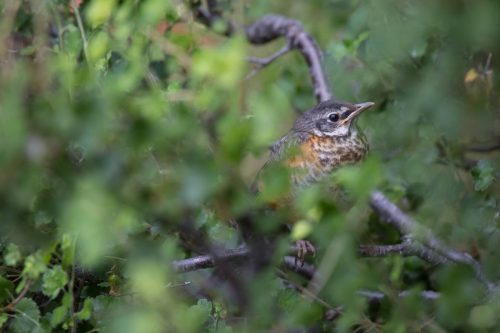
The American Robin plays a significant role in the ecosystems it inhabits. As both predator and prey, it contributes to the balance of the food web. American Robins serve as a vital food source for a variety of predators, including birds of prey (hawks, owls), mammals (foxes, raccoons), and snakes. Their presence supports the food web and helps sustain predator populations. The interactions between robins and their predators contribute to the dynamic balance of ecosystems, influencing population dynamics and species interactions.
By consuming large quantities of insects, robins help control pest populations, benefiting agricultural and garden environments. While robins do not directly pollinate flowers, their role in maintaining healthy ecosystems indirectly supports plant species that rely on pollinators. By controlling insect populations and dispersing seeds, they help sustain the habitats that pollinators depend on. As robins forage for earthworms and insects, they disturb the soil, which aids in soil aeration. This activity helps improve soil structure and promotes healthy plant growth.
Robins also play a role in seed dispersal. By eating fruits and berries, they help spread the seeds of various plants, aiding in plant reproduction and the maintenance of plant diversity. This seed dispersal helps promote plant diversity and forest regeneration. Robins contribute to the spread of many plant species, including those that provide food and habitat for other wildlife. As they digest these fruits, the seeds pass through their digestive system and are excreted in different locations. Even their droppings add nutrients to the soil, enhancing soil fertility and supporting plant health.
Cultural Significance
The American Robin holds a special place in North American culture. It is often associated with the arrival of spring and renewal. Its cheerful song and vibrant presence symbolize hope and new beginnings. Many people consider the sighting of the first robin of the year as a herald of warmer days to come. Robins have been featured in folklore, literature, and music. They are common subjects in children’s stories and are often depicted in artwork and photography. Their presence in backyards and urban areas has made them familiar to generations of people.
American Robins are sometimes referred to as “red-breasted” rather than orange due to historical and cultural naming conventions. When European settlers first encountered the American Robin, they noted its similarity to the “red-breasted” European Robin which also has an orange breast despite the name. When the European Robin was named, the color term “orange” did not exist in the English language. The term “orange” only came into use in English after the fruit of the same name was introduced to Europe from Asia in the 16th century.
Before the color orange was introduced into the English language, the term “red” was used to describe a range of colors that included what we now identify as orange. Despite the American Robin’s breast being more accurately described as orange, the term “red-breasted” has persisted. This naming convention has been reinforced over time through literature, common usage, and birdwatching guides, making “red-breasted” a familiar and accepted descriptor for this iconic bird.
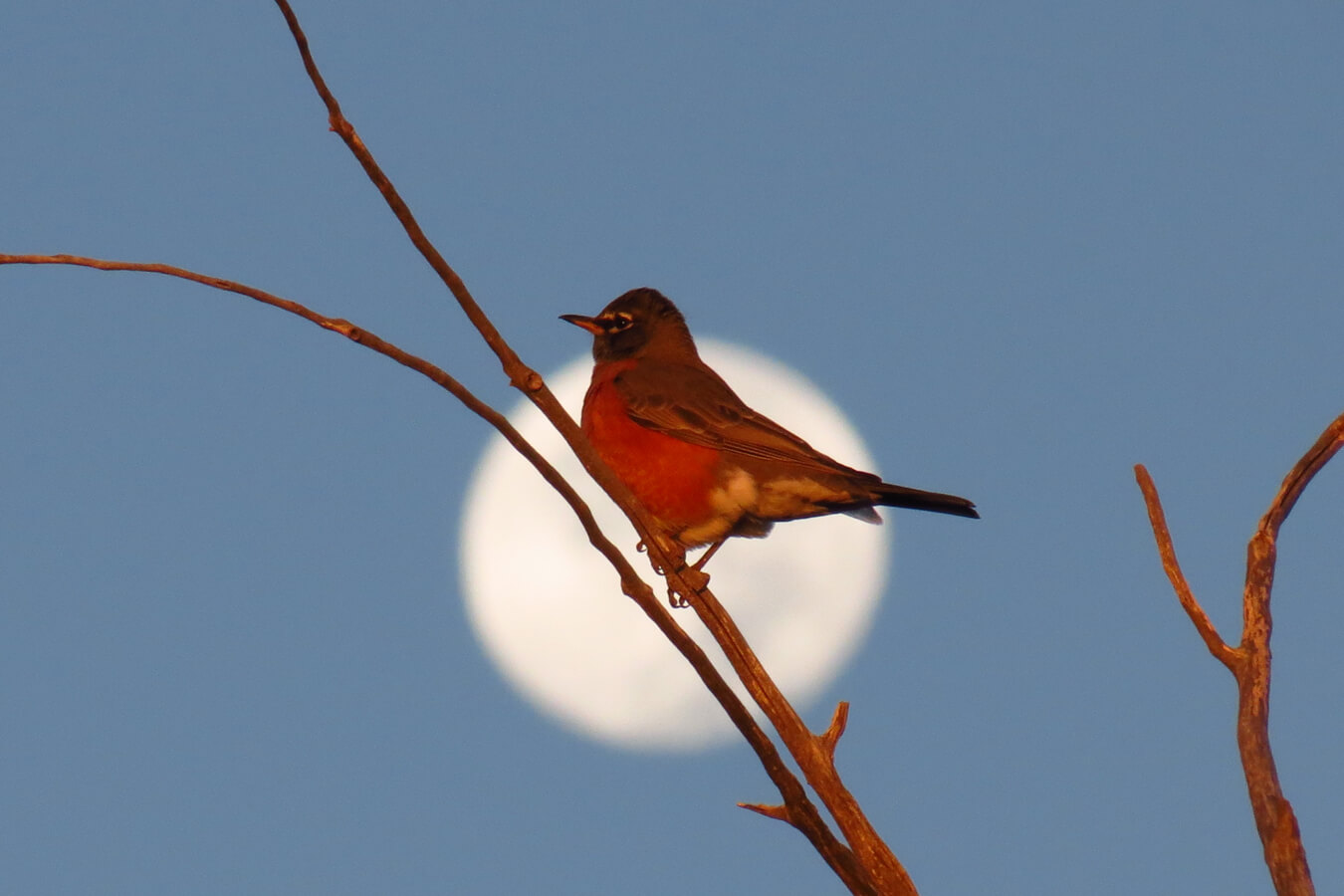
Conservation and Challenges
Despite their adaptability, American Robins face several challenges that can impact their populations. Habitat loss due to urbanization and agricultural expansion can reduce the availability of suitable nesting and foraging sites. Pesticide use poses another significant threat, as it can reduce insect populations and directly harm the birds.
Collisions with windows and predation by domestic cats are additional hazards that robins encounter, particularly in urban environments. Climate change also poses a long-term threat by altering the availability of food resources and suitable habitats.
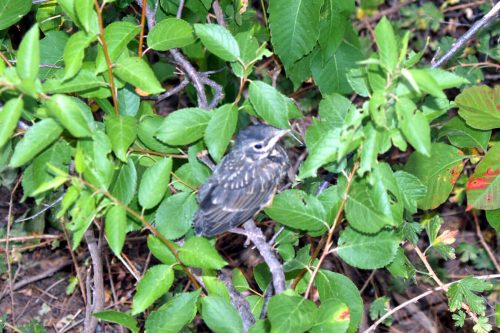
The American Robin is currently not considered a threatened species, thanks to its large and stable population. However, ongoing conservation efforts are important to ensure that robins continue to thrive. These efforts include Habitat Protection, Pesticide Reduction and Public Awareness.
Preserving natural habitats and creating bird-friendly environments in urban and suburban areas can provide safe nesting and foraging sites for robins. Reducing the use of pesticides and promoting organic gardening practices can help maintain healthy insect populations and reduce the risk of poisoning. Educating the public about the importance of protecting birds and their habitats can foster a culture of conservation. Simple actions like placing decals on windows to prevent collisions and keeping cats indoors can make a significant difference.
National Park Presence & Wildlife Photography
The American Robin is present in 58 National Parks in varying degrees of abundance. If you visit one of the parks in hopes of seeing and photographing one of these iconic birds, keep a sharp eye and be patient. Wildlife is wild and unlike landscape photography, viewing specific types of wildlife can be hit or miss.
If wildlife does present itself, always make sure to maintain a safe distance. Using a telephoto lens allows for close-up shots without intruding on the animals’ space. If you already own or want to own a professional grade mirrored camera like the Canon EOS 5D Mark IV Full Frame Digital SLR, we recommend using a Canon EF 100-400mm f/4.5-5.6L is II USM Lens zoom lens for wildlife photography. If you have or are interested in a newer mirrorless model like the Canon EOS R5 Full-Frame Mirrorless Camera, we recommend using a Canon RF100-400mm F5.6-8 is USM Black for long distance shots.
Not quite ready to invest in traditional professional grade camera equipment, but want to enhance the quality of your cell phone photographs? Consider using a Moment 58mm Tele Lens for an improved zoom and be sure you have a compatible phone case to mount your new lens in. Since cell phones don’t have the same zoom distance and quality as traditional professional cameras, be extra mindful about your distance from wildlife when photographing them and don’t get too close.
Below is a list of National Parks where the American Robin may be spotted:
Final Thoughts
Wildlife viewing and photography offer numerous benefits, both for individuals and for broader conservation efforts. Engaging in these activities fosters a deep connection with nature, promoting mental well-being and reducing stress through the tranquil experience of observing animals in their natural habitats. It also enhances physical health through outdoor exploration and boosts creativity and patience. On a broader scale, wildlife photography raises awareness about the beauty and diversity of animal species, inspiring conservation efforts and environmental stewardship.
The American Robin is a cherished and iconic bird that brings joy to many people with its melodious song and striking appearance. Its adaptability and resilience have allowed it to thrive in a variety of environments across North America. By understanding the challenges robins face and taking steps to protect their habitats, we can ensure that these delightful birds continue to grace our landscapes for generations to come.
Whether you are an avid birdwatcher, photographer or simply enjoy the sight of a robin hopping across your lawn, appreciating and supporting the American Robin is a way to connect with nature and contribute to the health of our ecosystems. As symbols of spring and renewal, robins remind us of the beauty and resilience of the natural world.
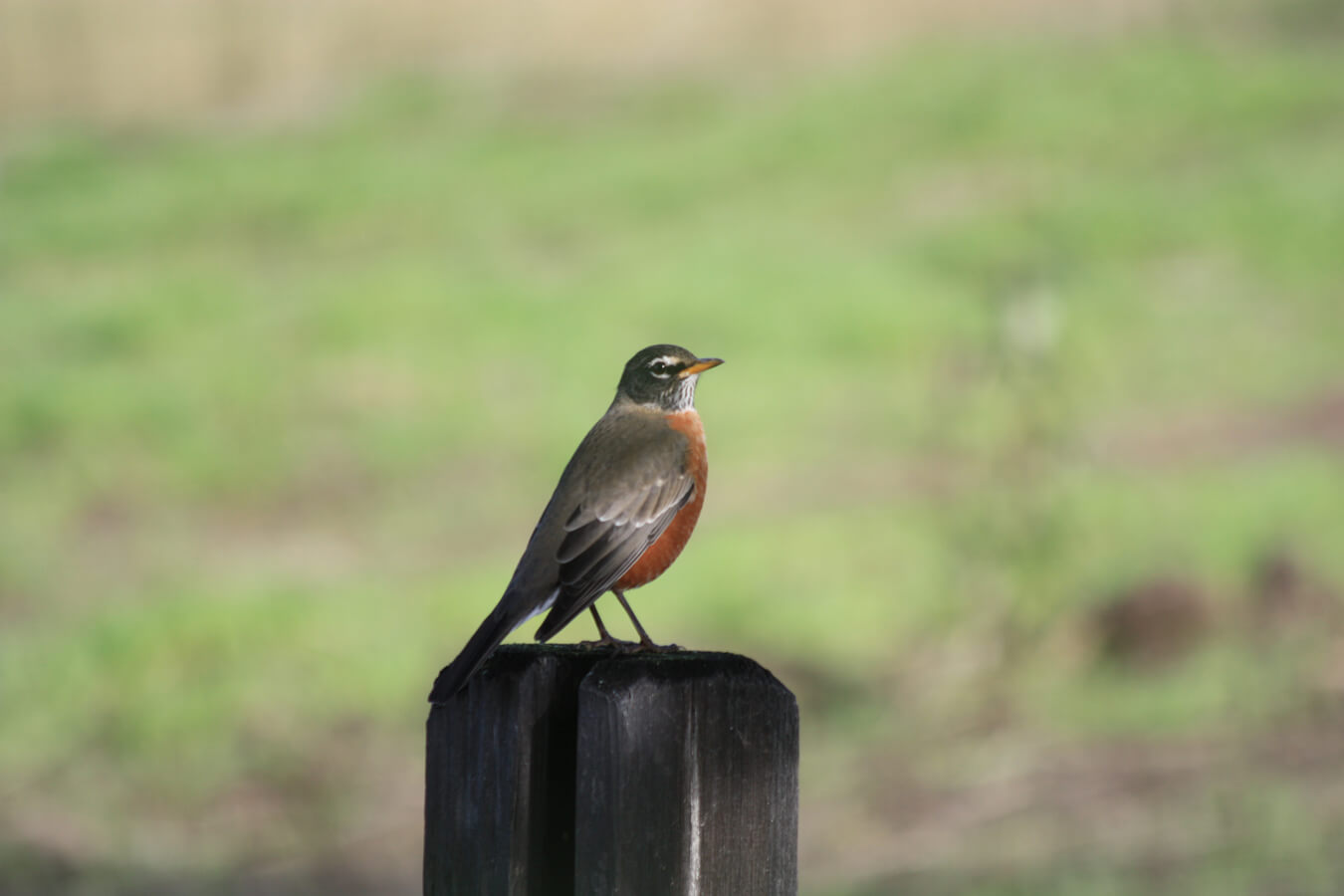
Want more information about the amazing wildlife that call our National Parks home? Take a look at our National Park Wildlife page to explore the various parks and the animals in them. Planning on visiting a National Park in the near future? Be sure to follow park regulations, practice “Leave No Trace” principles, and prioritize safety while exploring.
Joyful Journeys!
Bonnie, Co-Owner, National Park Photographer
Want to learn more about the American Robin and other bird species? Check out the links below!
- Robins (Backyard Birds)
- Robins (First Step Nonfiction ― Animal Life Cycles)
- Robins!: How They Grow Up
- The American Robin: A Backyard Institution
- North American Bird Watching for Beginners: Field Notes on 150 Species to Start Your Birding Adventures
- National Geographic Field Guide to the Birds of North America, 7th Edition
- Bird Songs: 250 North American Birds in Song
Want to know what an American Robin sounds like? Visit the link below to hear its unique song:
American Robin (Turdus migratorius) – Song
Please note, by making purchases through our affiliate links, you are supporting our mission to celebrate and showcase our National Parks and the photographers who frequent them. As an Amazon Associate, National Park Photographer earns from qualifying purchases at not cost to you. We appreciate your support.

